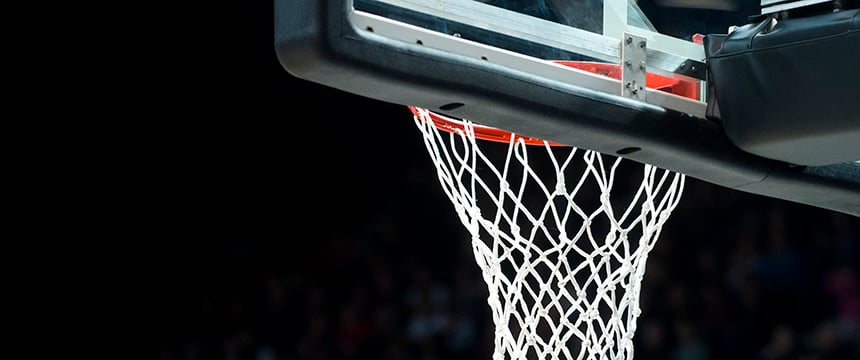
This article was originally published in the October-November issue of the Lead1 Association NIL Institutional Report and is republished here with permission.
In the beginning of the name, image, and likeness (“NIL”) era in college sports, state laws, NCAA regulations, boosters, and collectives have been the prime focus for both observers and NIL stakeholders, with seven-figure NIL deals making sensationalistic headlines. During that time, the country celebrated the 50th anniversary of Title IX of the Education Amendments of 1972 (“Title IX”), which, among other things, paved the way to increased participation of women in college sports. So far, it seems Title IX has been sitting on the metaphorical sidelines of NIL. However, that does not mean that Title IX has no role to play in the NIL game, and NCAA schools should be actively considering Title IX as part of their NIL game plan.
Title IX provides, in relevant part, “[n] o person in the United States shall, on the basis of sex, be excluded from participation in, be denied the benefits of, or be subjected to the discrimination under any education program or activity receiving Federal financial assistance.” Title IX mainly governs the activity of only one NIL stakeholder – NCAA schools, and as a federal law, it is enforceable without regard to any state law or other regulation relating to NIL. In other words, an NCAA school’s compliance with state and NCAA NIL regulations does not preclude or mitigate a Title IX violation. The NCAA spotted this issue in its July 2021 Question and Answer Guidance to its NIL Policy and recommended that NCAA schools consult their general counsel about the issue and “be aware of and comply with all applicable state and federal laws, including gender equity requirements.” The NCAA’s observation was not made in a vacuum, and decisions and actions an NCAA school takes as it sets NIL policy and monitors NIL activity could have unintended Title IX consequences. As policies and strategies are tweaked in Year 2 of NIL, NCAA schools are encouraged to consider Title IX while doing so.
As a threshold matter, it is folly for an NCAA school to think that it might avoid Title IX concerns simply by being and staying uninvolved in NIL activities, i.e., leaving such activities to its student-athletes and third parties (as most NIL laws and rules generally contemplate). This simplistic approach may limit the risk of a potential NIL-related Title IX violation, but it does not eliminate the risk. It ignores the ways NIL can still touch a school even if it is not involved in facilitating or approving NIL deals for its student-athletes. In any event, such NIL abstinence is more theoretical than actual, as most schools are generally wading, if not swimming, in NIL waters in hopes (and fears) of keeping their athletic programs competitive in the NIL environment.
In evaluating NIL policy and activity, NCAA schools need to be cognizant of two types of Title IX violations: first, any disparate treatment or impact that any institutional policy has on the opportunities and benefits for women athletes; and second, any liability that can be imposed on a school for conduct of third parties, including boosters, collective, or brands.
It is rare for NCAA schools to create and sustain policies that explicitly discriminate against women athletes. However, even with many decades of Title IX compliance experience, schools are still susceptible to sex discrimination claims under the statute, including disparate treatment claims (i.e., inequitable conduct where discriminatory intent is outright or can be inferred, e.g., inequitably eliminating women’s sports teams or not providing women athletes the same access to athletic facilities or equipment) and disparate impact claims (i.e., facially neutral policies that disparately impact women athletes, e.g., policies that when administered result in unequal resources or outcomes between men and women student-athletes, including fundraising, coaching, discipline). Title IX claims and sanctions can have a significant impact on a school’s financial and other resources. NIL activity – and a school’s knowledge of and involvement in it – would appear to create a new platform for potential Title IX claims.
The advent of NIL has pushed NCAA schools to amend and create policies and programs in response to new and ever-increasing NIL activity of student athletes (e.g., student-athlete NIL education pro-grams, processes to approve NIL transactions, and NIL marketplaces to facilitate third-party and student-athlete NIL engagement). In this reactionary environment, NCAA schools should be mindful of their involvement in the procurement or approval of NIL transactions and the assistance given to their student-athletes in the process, specifically whether such involvement or assistance is equitably afforded to both men and women athletes.
To stay ahead of these issues, NCAA schools should evaluate the following aspects of their athletic programs in relation to NIL:
Employee Title IX Education and Monitoring: A school’s Title IX compliance is only as good as the conduct of its staff. An employee violation equates to a school violation. For example, if a staff member provides NIL education or advice only to the school’s football players or assists those players in procuring NIL deals, then the school may be susceptible to a Title IX claim, even if this staff support or assistance was not authorized by the school. Accordingly, schools subject to Title IX should institute, or review existing, professional development and monitoring systems for athlete-facing employees, specifically in regard to Title IX and NIL.
Administration of Policies: NIL likely impacts a number of pre-existing school policies, including student-athlete use of a school’s intellectual property (e.g., marks and logos). In the context of NIL, a student-athlete’s access and right to use their school’s intellectual property would seem a lucrative benefit for the student-athlete and impact the value of an NIL deal involving that student-athlete. Accordingly, in offering student-athletes access to or use of its marks, logos or other intellectual property in an NIL deal, schools should carefully consider the reasoning for and impact of doing so (or not doing so). Any limits to student-athlete use of intellectual property or other license that impacts the access of women student-athletes to the NIL market could potentially run afoul of Title IX and expose the school to liability. Specifically, NCAA schools should scrutinize any restrictions on the endorsement of products and services that are customarily associated with women and/or other limitations that would make women student-athletes or teams less likely than their male counterparts to receive approval for their NIL deal and corresponding use of the school’s intellectual property.
NIL Involvement with Third Parties: Schools subject to Title IX also should assess and review policies and arrangements related to co-branding opportunities and/or other interactions with an NIL sponsor or an NIL collective. Title IX is potentially implicated if a school inequitably provides co-branding opportunities to men’s teams or male student-athletes in relation to women’s teams or women student-athletes. Likewise, schools could also face scrutiny by endorsing or providing support to collectives that are focused only on men’s sports or male student-athletes (e.g., football, men’s basketball, or wrestling). Accordingly, a school’s interactions with, and any facilitation or enhancement of NIL opportunities through, third parties, such as sponsors or collectives, should be viewed through a gender-equity lens and scrutinized for sex-based discrimination.
It is this last point – potential Title IX liability for the conduct of third-parties engaging in NIL activity – that may deserve some extra attention at this juncture in the NIL era. While such Title IX liability for third-party conduct seems both remote and extreme, it is not unprecedented in certain circumstances, including third-party activity of boosters. In theory and practice, when acting as independent third parties entering into NIL deals with student-athletes, booster organizations or collectives would not seem to create Title IX concerns for the respective schools of those student-athletes. However, there is case law in the context of high school athletics that suggests that colleges and universities should be careful (to the extent they can) about how those third-party relationships are structured and function in practice. In Daniels v. Sch. Bd. of Brevard Cnty., Fla., 985 F. Supp. 1458, 1462 (M.D. Fla. 1997), the court held that a school could not escape Title IX responsibility, even when the school provided equal funding to its baseball and softball teams, when it “acquiesced” to a system where each team had its own booster organization and funding disparities existed when the boys’ baseball booster organization was more successful in fundraising than the girls’ softball booster organization.
Even though NIL opportunities are categorically different than the straight fundraising disparities in Daniels, the case and its holdings could be analogized to the context of NIL booster activity. The NCAA defines a “booster” as an individual or entity “who is known (or who should have been known) by a member of the institution’s executive or athletics administration to have participated in or to be a member of an agency or organization promoting the institution’s intercollegiate athletics program or to assist or to have assisted in providing benefits to enrolled student-athletes or their family members.” In other words, if the NIL activities of a booster organization or collective (i) promotes a school’s athletic program or assists in providing benefits to enrolled student athletes, and (ii) such activities are known to the school, then the school could potentially be responsible for any activity of the booster organization or collective that violates NCAA rules.
Of course, it may be quite different for the NCAA to tag a school vicariously for a rules violation by a booster or collective than to have Title IX liability imposed on a school for such third-party conduct. Nevertheless, much like in Daniels, Title IX could be implicated if the school has knowledge of and “acquiesces” to boosters or collectives supporting student-athlete NIL activity in a way that discriminates based on sex (e.g., a collective providing only NIL deals to football players). Liability could potentially turn on the level of interaction, association, or engagement between the school and the booster organization or collective that is engaged in NIL activity in a potentially discriminatory manner. While general consensus is that the advent NIL in college sports should provide equal opportunities and benefits for all student-athletes regardless of sex or sport, boosters or collectives targeting the more lucrative or popular sports, like football and men’s basketball, could conceivably present the same sort of equity issues present in Daniels.
For these reasons, Title IX must be a primary consideration for any school that is subject to its requirements and has student-athletes engaging in NIL activity, especially with booster organizations or collectives actively supporting its student-athletes, even in circumstances where the institution is not proactively involved with such organizations or collectives or their NIL activity. To be sure, the NCAA has done little to enforce its own rules prohibiting the use of NIL as a pay-for-play scheme or as an impermissible recruiting inducement, which arguably has led many participants in NIL activity to push the envelope with respect to those rules. While that may be happening, schools cannot lose sight of Title IX and their potential liability for the third-party activity that may be going on around them (with their own varying degrees of knowledge, facilitation, and participation). Consequently, in this brave (and risk-provoking) new world of NIL, the big regulatory bomb to drop is not likely to be an NCAA compliance matter, but rather, a Title IX action brought by or for women student-athletes who see NIL as a benefit or opportunity that is being disparately delivered to male student athletes, including through third parties known to or interconnected with their school.
